1. Filofax Organizers
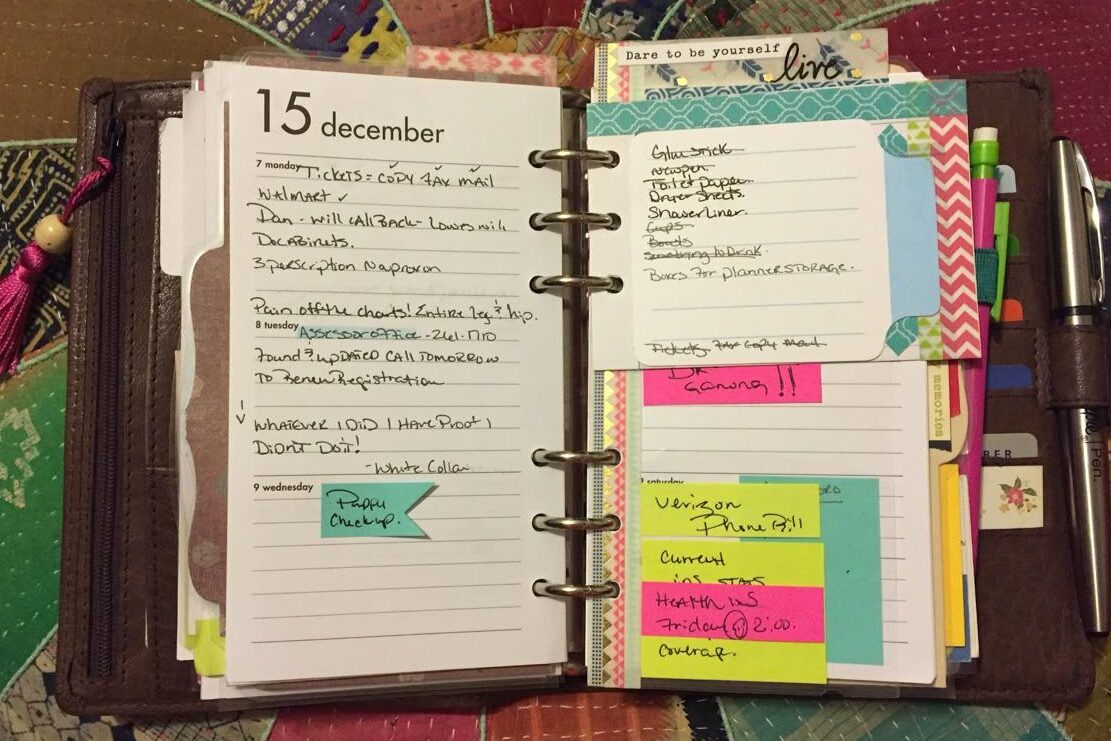
Before apps and cloud calendars, people managed their lives with paper, pens, and a little creativity. Every reminder, schedule, and record lived in physical form, written, clipped, or tucked away somewhere safe. Looking back, these tools feel almost charming in their simplicity, but they worked wonders at keeping life organized.
The Filofax was more than just a binder, it was a personal command center. Inside, you had calendars, contacts, notes, and even sections for budgets or travel plans. Business professionals carried them everywhere, zipping them open at meetings to flip through neatly tabbed sections. Students used them too, filling the pages with schedules, assignments, and handwritten reminders. The leather or fabric covers gave them a polished look, and swapping out inserts each year became a small ritual. Owning a Filofax meant you were serious about being organized, and for some, it became almost an extension of their personality. Before smartphones streamlined everything, this chunky book with paper refills was the ultimate symbol of planning and control.
2. Wall Calendars
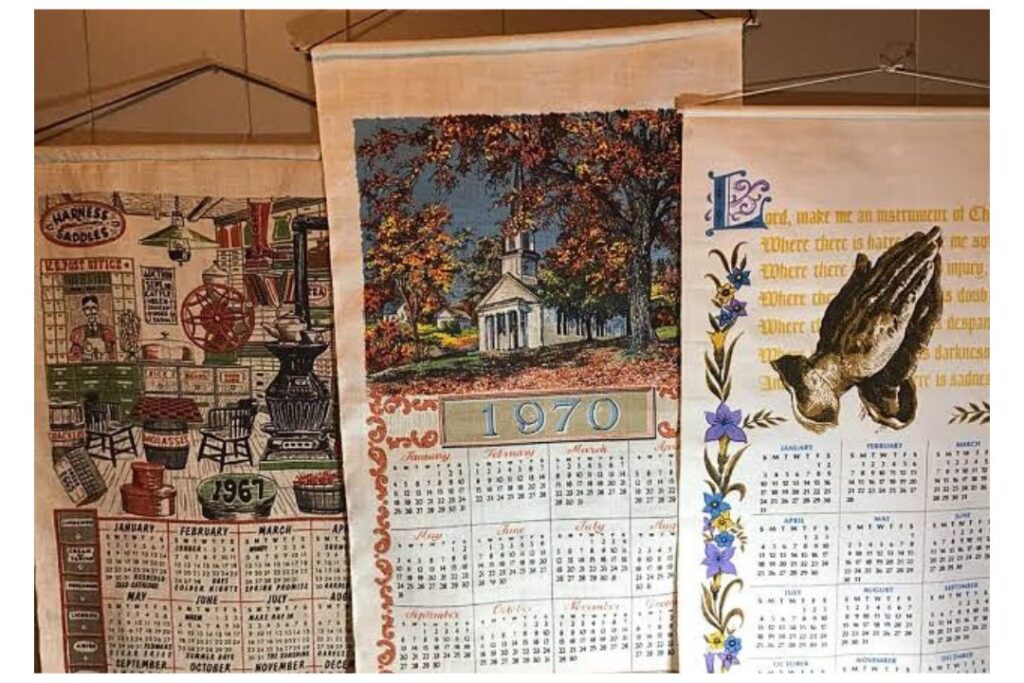
A wall calendar was often the heart of a home or office, hanging in the kitchen or by a desk where everyone could see it. Dates were filled with birthdays, anniversaries, and circled reminders like “Doctor 3 PM” or “Pick up cake.” Families crossed off each day with big red X’s, a satisfying way to see time moving forward. Calendars often came with pictures that reflected personal taste, scenic landscapes, puppies, classic cars, or even advertising giveaways from local businesses. They weren’t just about schedules; they were decorative too. Glancing at the calendar became a daily habit, whether to check the next holiday or to see how close the weekend was. It was a shared tool, visible to anyone who walked by, and in its own way, it kept households running smoothly.
3. Pocket Planners
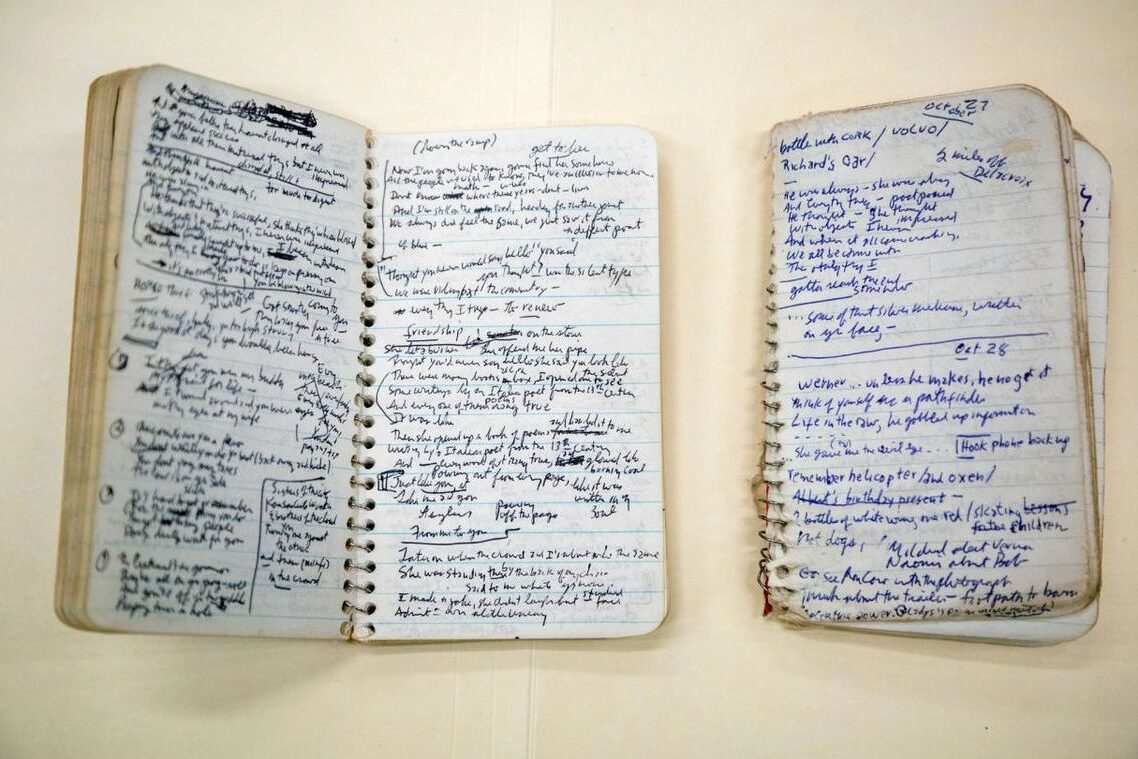
Pocket planners were the slim, portable cousins of the wall calendar, designed for carrying everywhere. Tucked into handbags, briefcases, or jacket pockets, these little books were filled with pages of dates waiting to be filled. People scribbled appointments, meetings, and reminders in cramped handwriting, sometimes crossing out and rewriting when plans changed. They became almost like diaries, capturing fragments of daily life through notes and doodles. Students kept track of homework, parents tracked after-school schedules, and workers used them for deadlines and meetings. The best part was the privacy, no notifications or pop-ups, just a quiet record of life written in ink. For many, flipping through a worn planner at the end of a year felt like flipping through a scrapbook of memories, complete with coffee stains and folded corners.
4. Check Registers
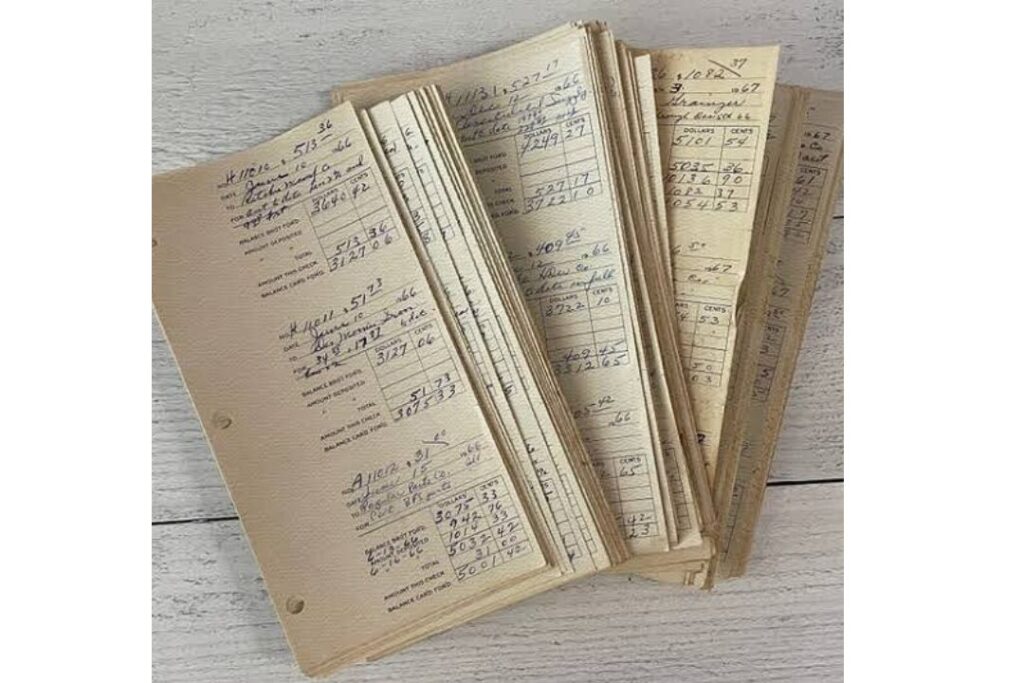
Before online banking apps showed you where every penny went, check registers were the go-to method for keeping finances straight. They came as small lined booklets, often tucked into the back of a checkbook. Each time you wrote a check or made a deposit, you carefully logged the amount, date, and balance. People took pride in keeping their registers tidy, though mistakes and math errors were common. Balancing a checkbook was almost a monthly ritual, with calculators, bank statements, and plenty of eraser marks involved. For families, it meant making sure bills were paid and groceries covered. While tedious at times, these registers provided a sense of control over money that felt both responsible and reassuring. Today, they may seem old-fashioned, but they were once the backbone of personal budgeting.
5. Rolodexes
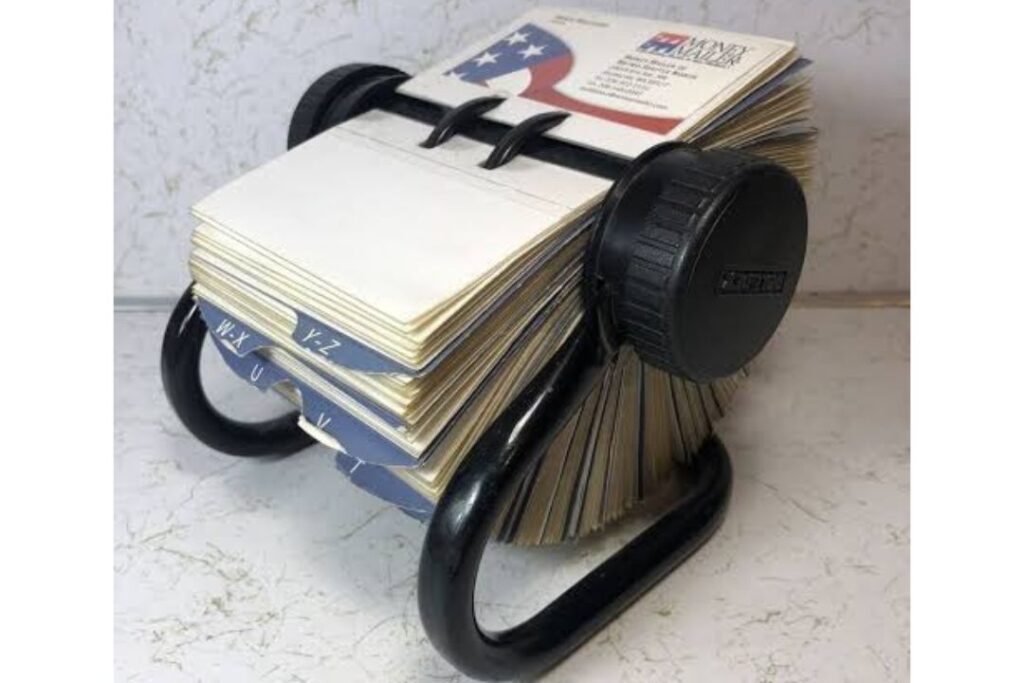
The Rolodex was the original contact list, sitting proudly on office desks everywhere. It was a spinning wheel filled with cards that stored names, addresses, and phone numbers. Each card could be handwritten or typed, sometimes even stapled with a business card for extra detail. Flipping through the Rolodex became second nature, you could find an important number in seconds just by spinning to the right letter. In professional circles, the size of your Rolodex almost reflected the size of your network. Secretaries, salespeople, and executives relied on them daily, and the cards often bore evidence of updates, crossed-out job titles, new numbers squeezed into corners. While digital contacts are faster now, the Rolodex had a tangible charm, turning connections into something you could hold and shuffle through with your hands.
6. Business Cards
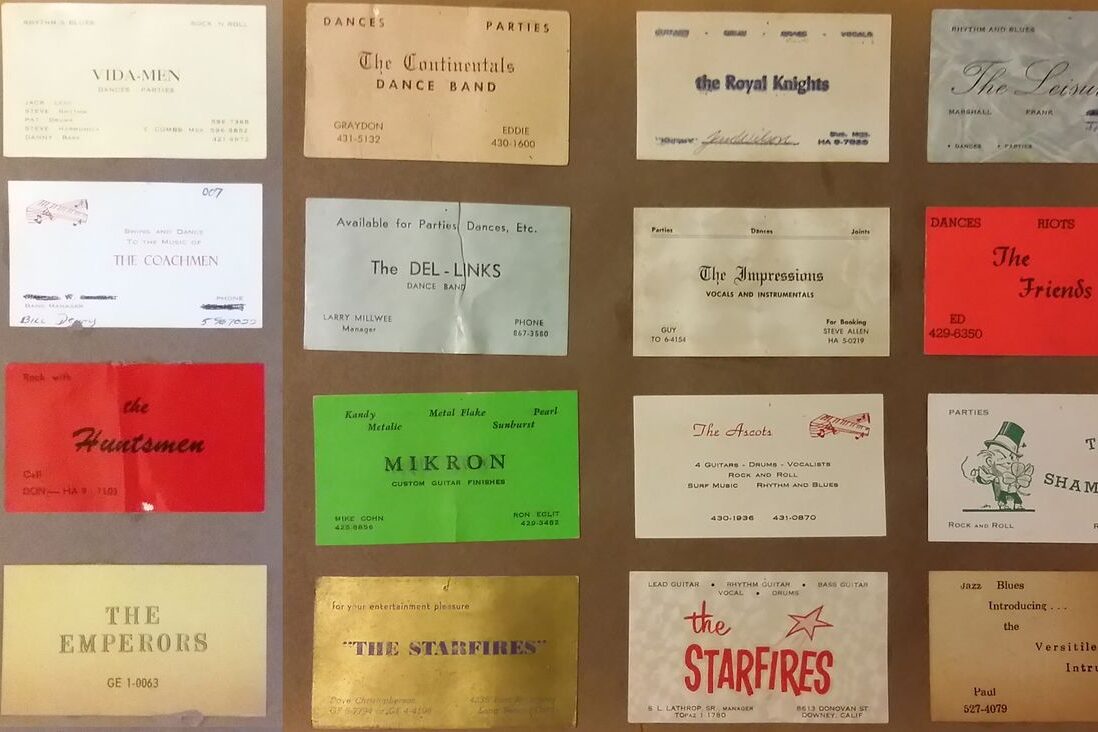
Long before LinkedIn profiles and email signatures, business cards were the gold standard for making connections. They were handed over in meetings, slipped into wallets, or exchanged at conferences like miniature calling cards of identity. People collected them in boxes, binders, or small organizers, sometimes flipping through hundreds to find the right contact. Each card told a story, some were sleek and embossed, others colorful and creative, reflecting both the person and the company behind it. For salespeople and entrepreneurs, a thick stack of business cards was a badge of hustle and networking. Even today, they’re still around, though often digitized or scanned into apps, but back then they were purely physical tokens that tied you to someone you’d met face-to-face.
7. Index Card Boxes
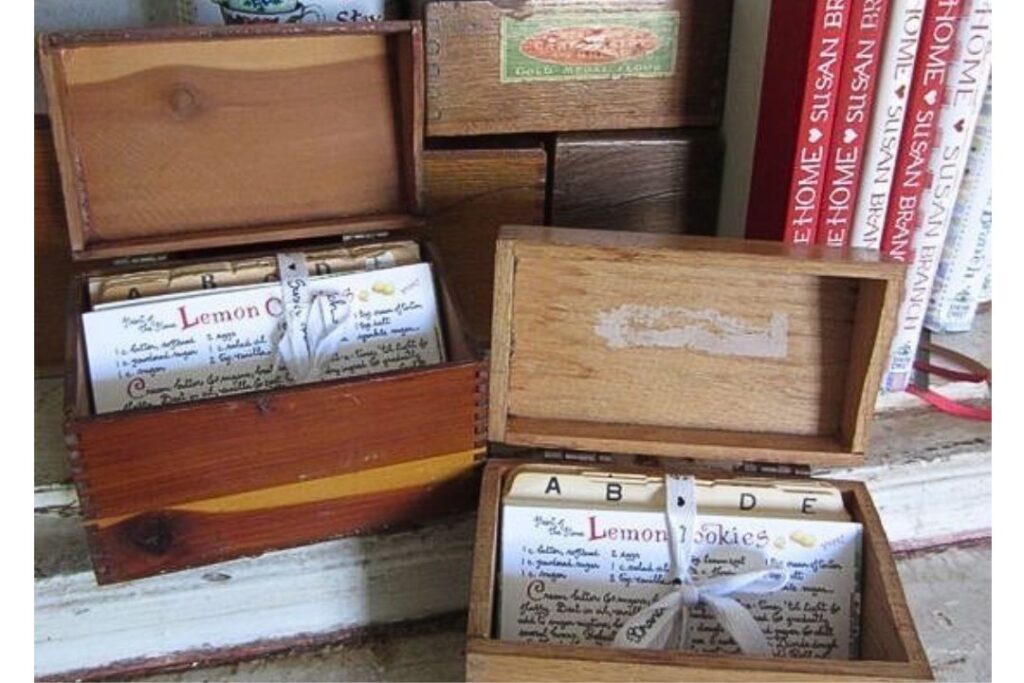
Index cards may seem humble, but they powered a lot of serious organization. Recipes were handwritten and sorted by tabs, “Appetizers,” “Desserts,” or “Holiday Specials.” Students and researchers kept flashcards neatly stacked, quizzing themselves before exams or speeches. Teachers relied on them for lesson notes, while writers scribbled plot points and shuffled them into order. The box itself, often wooden or plastic, gave the system structure and a sense of permanence. You could alphabetize, categorize, or simply pile them high and flip through when needed. Unlike screens, index card boxes invited touch, you handled each card, added to it, and sometimes even decorated it. They were simple, adaptable, and durable, keeping information safe long before cloud storage was even imagined.
8. Wall Charts and Chore Wheels
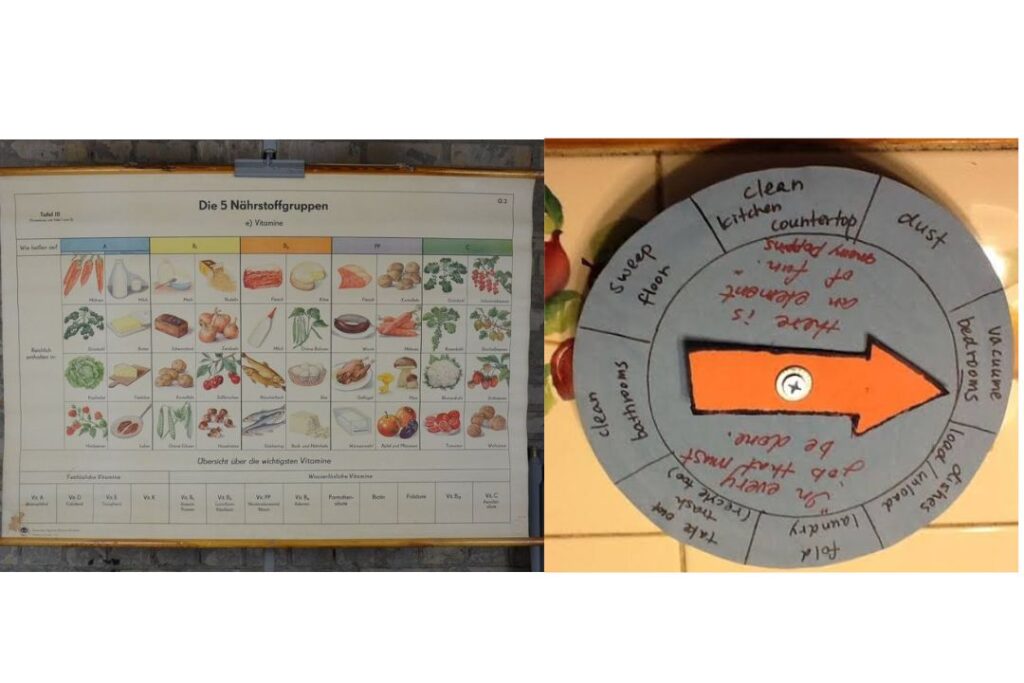
Families and classrooms often ran on wall charts or colorful chore wheels. With names, tasks, and stickers or stars, they made responsibility visible to everyone. In homes, kids could see who was on dish duty, who had to sweep, and who got to take out the trash. In schools, charts kept track of attendance, homework completion, or reading goals. The rotation aspect, turning a wheel or moving a marker, made the process interactive and even fun. Parents and teachers leaned on these charts not just for structure, but also for accountability, since nobody wanted to be caught skipping their turn. Beyond the tasks themselves, these charts fostered teamwork and taught the basics of fairness and shared responsibility.
9. Clipboards
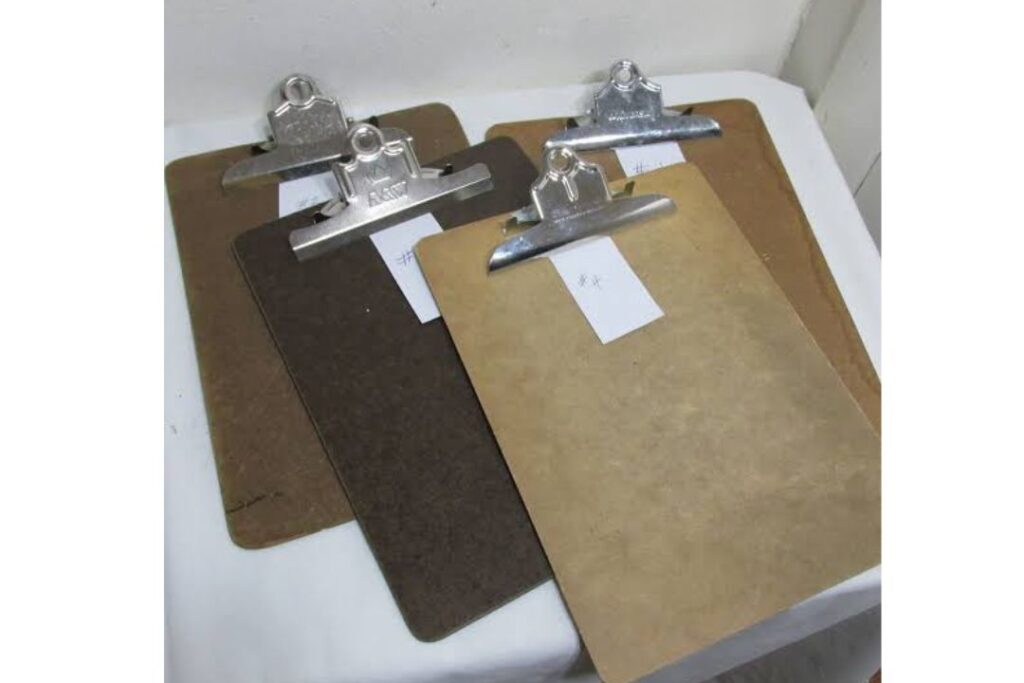
Clipboards were the portable command post for anyone who needed to track information on the go. Coaches carried them to jot down plays and keep stats during games. Survey takers used them on city streets, collecting responses with a pen in hand. Construction managers, delivery drivers, and teachers all relied on them to keep forms and papers in place while moving around. There was something official about the sight of a clipboard, if you held one, people assumed you were in charge of something important. Many were battered from years of use, with dents, stickers, or coffee stains giving them personality. In a world without tablets, clipboards were the reliable surface that turned anywhere into an instant desk.
10. Notepads by the Phone
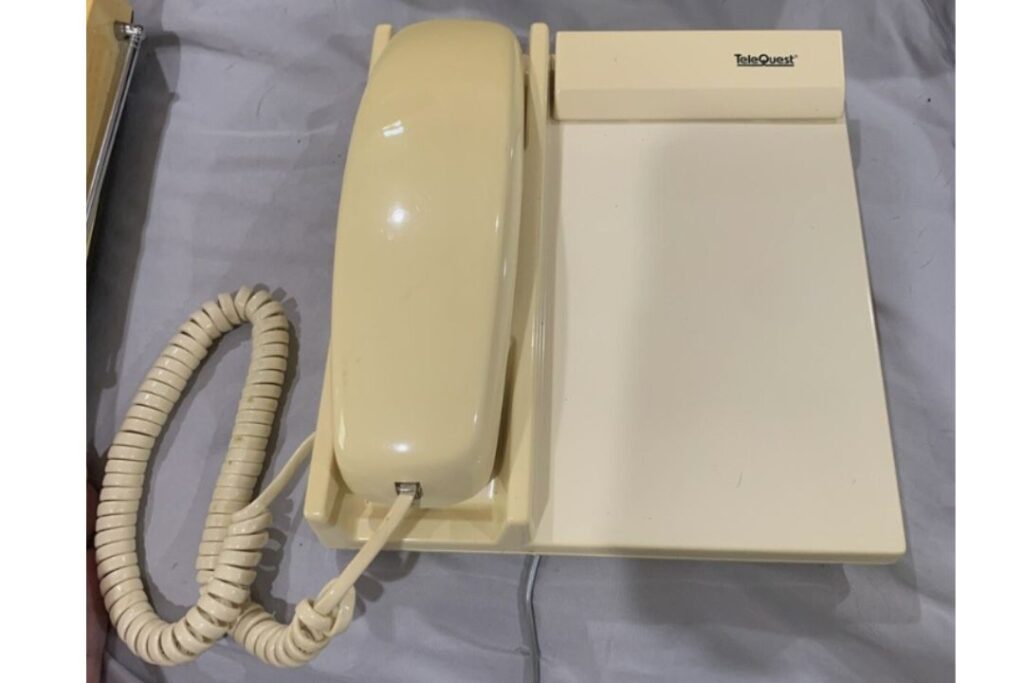
Every home with a landline had a notepad sitting right beside it, ready to capture quick messages. You’d scribble down who called, the time, and what they wanted, often with a hurried “Call back!” scrawled across the page. These notepads collected everything from phone numbers to grocery reminders to absentminded doodles during long conversations. Some were branded freebies from businesses, others had cheerful designs or came in the form of sticky notes for easy display. They were essential tools in the days before voicemail was common, ensuring that important calls weren’t lost in memory. The pile of old notes often lingered, too, a paper trail of conversations and errands that revealed the everyday rhythm of life.
11. Desk Blotter Calendars
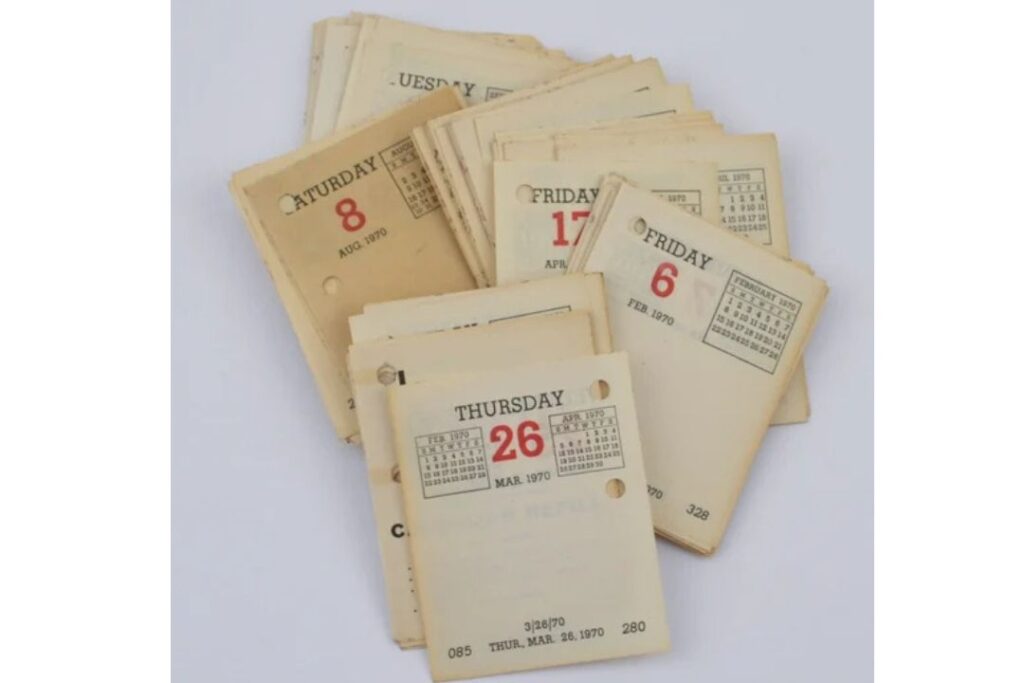
Desk blotter calendars were the oversized paper mats that covered office desks, combining function with a bit of flair. Each page had the month spread out across the bottom half, leaving plenty of space for notes, doodles, and reminders. People used them for everything, scheduling meetings, sketching out ideas, or simply jotting down phone numbers mid-call. The pages often showed smudges from coffee cups or faint indentations from heavy handwriting. When the month ended, you’d tear off the top sheet and start fresh, leaving behind a stack of lived-in history. They weren’t just for planning; they doubled as a protective surface, keeping ink from bleeding onto the desk below. For many workers, flipping to a clean page felt like a small reset, a new chance to organize the chaos of office life.
12. Handwritten To-Do Lists
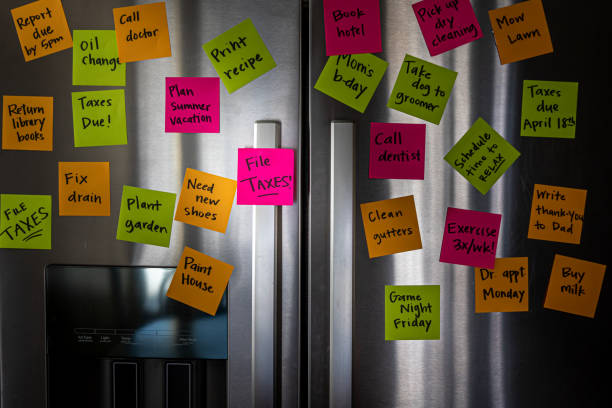
Nothing was more straightforward than a handwritten to-do list. These lists could appear anywhere, on yellow legal pads, scraps of envelopes, napkins, or sticky notes stuck to a fridge. Tasks were often written in quick, uneven handwriting, some crossed out with satisfaction while others lingered for days. The beauty of these lists was their flexibility: you could jot them on the fly, carry them in a pocket, or pin them somewhere visible. They were reminders of errands, chores, or long-term projects, and sometimes they even grew into little personal journals of productivity. For many, the physical act of writing a list and scratching items off felt more rewarding than tapping a digital checkmark. These lists carried the personality of their writers, some neat and methodical, others messy and chaotic, but always uniquely human.
13. Bulletin Board Notes

Bulletin boards turned walls into information hubs. At home, they were filled with appointment cards, school reminders, and handwritten notes. In offices or classrooms, they held memos, announcements, and colorful flyers, all fastened with thumbtacks or push pins. The boards themselves were often a collage of overlapping layers, where old reminders stayed pinned longer than needed, half-hidden behind new ones. Family members or coworkers could quickly scan the board to see what mattered that week. Some notes were purely practical, like a dentist appointment slip, while others carried warmth, like a handwritten “Good luck!” or a photo tacked alongside. Bulletin boards didn’t just organize schedules; they also reflected the life and activity of the space they occupied, making them both functional and personal.
14. Paper Address Books
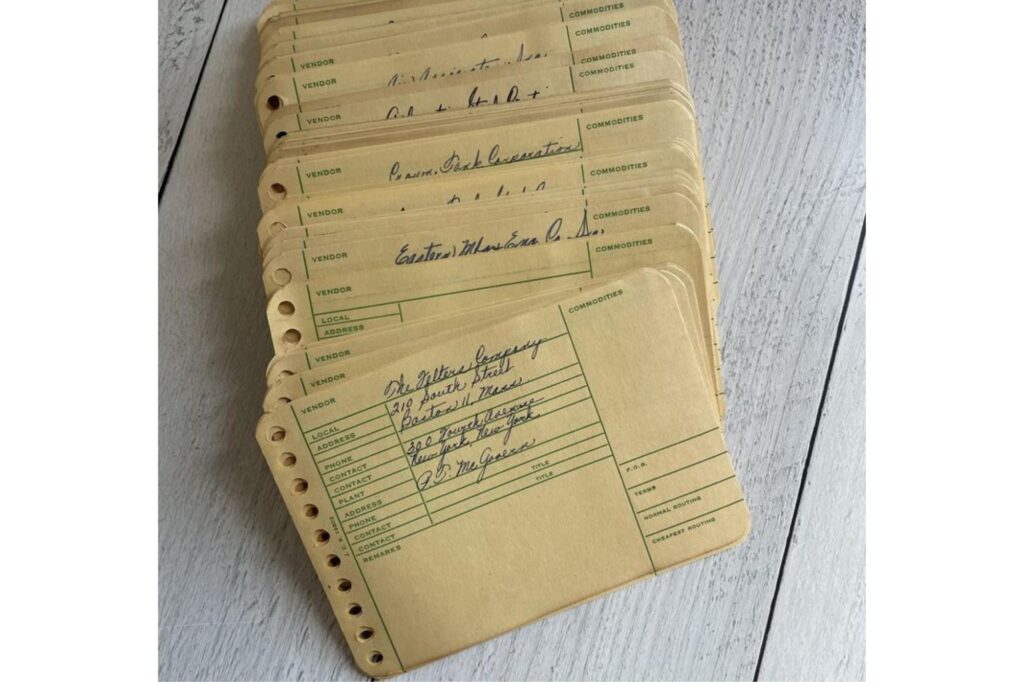
Paper address books were once the backbone of social connections. Neatly alphabetized pages held the names, addresses, and phone numbers of friends, family, and colleagues. Over time, they became living documents, numbers crossed out, new ones squeezed in, and margins filled with updates like “moved to Chicago” or “new last name.” Some people guarded their address books like treasures, packed with decades of connections. They were indispensable for sending holiday cards, making phone calls, or planning reunions. Losing one felt devastating, since it meant losing the map of your personal network. Flipping through an address book today feels nostalgic, a reminder of how much care went into keeping track of relationships before everything lived on a phone.
15. School Assignment Books
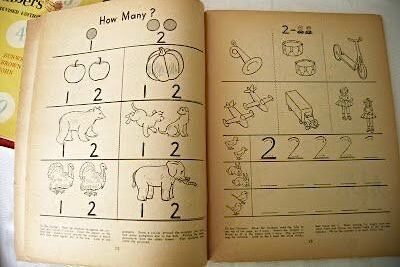
For students, the assignment book was both a lifeline and a burden. Teachers handed them out or required students to buy them, insisting that every homework task and project deadline be written down. Each page showed a week or month, with boxes waiting to be filled. Some students color-coded, others scribbled hastily, and many swore they’d stay on top of it, only to fall behind anyway. Parents often checked them too, signing off to confirm that assignments were recorded. For the organized few, these books kept them ahead of the game. For others, they were a constant reminder of procrastination. Still, they taught an early lesson in planning, accountability, and the value of writing things down.
16. Time Logs for Billing
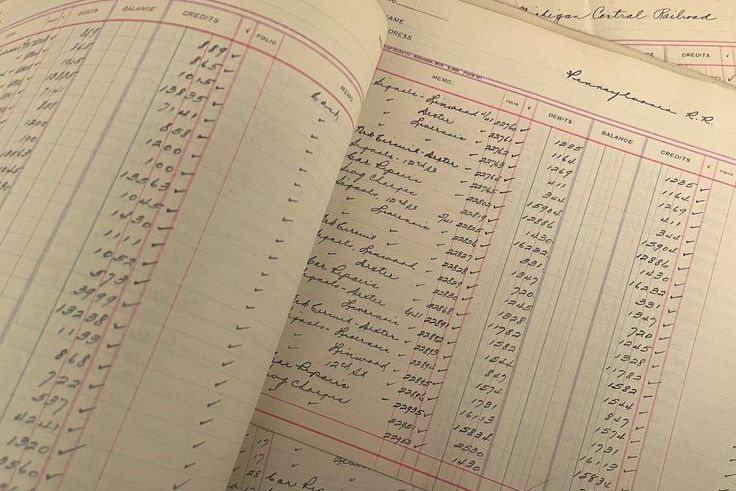
For lawyers, consultants, and freelancers, time logs were essential tools for tracking hours before spreadsheets existed. They were usually notebooks, ledgers, or pre-printed sheets where every task got a start and stop time. Precision mattered because those notes translated directly into paychecks and client invoices. Professionals carried them everywhere, jotting down details as they switched between projects. A single misplaced entry could mean lost income, so accuracy was key. These logs weren’t glamorous, but they were a lifeline for anyone who billed by the hour. Today, digital trackers do the math instantly, but there was something grounding about physically recording your work and watching the hours add up in ink.
17. Receipts in Envelopes
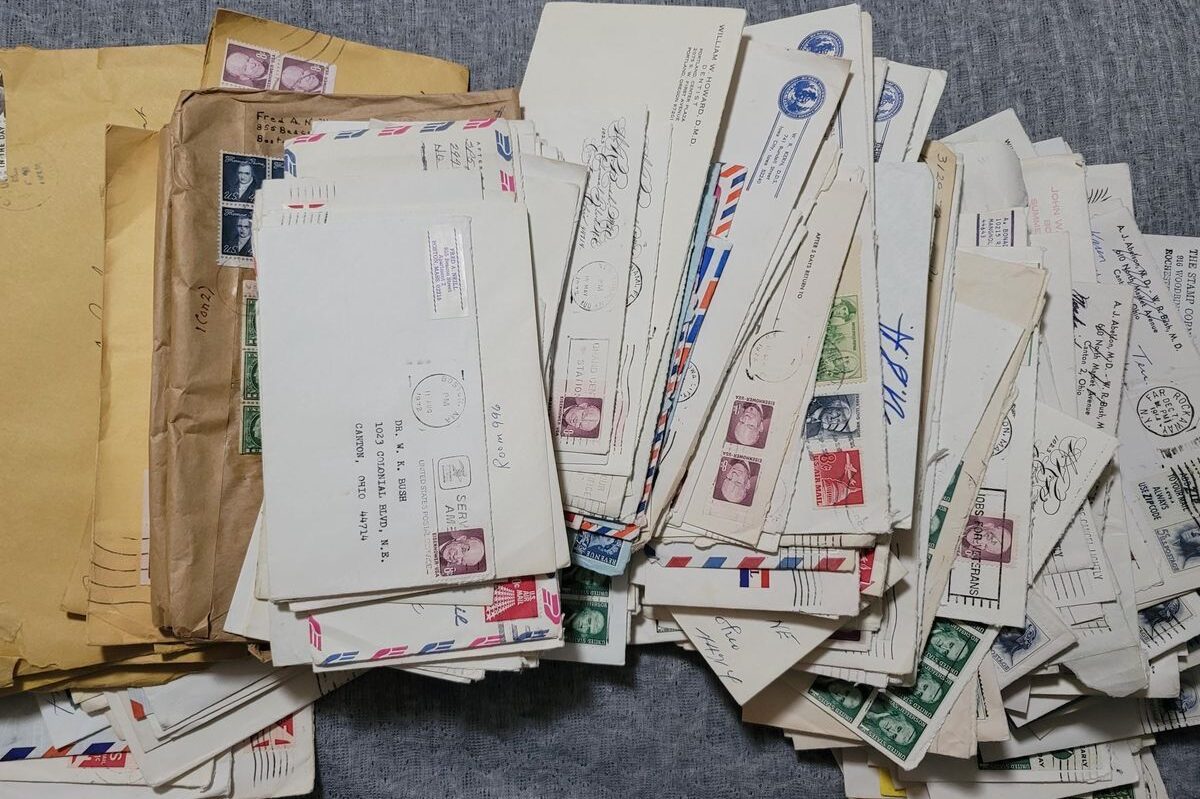
Tax season once meant pulling out a fat envelope stuffed with paper receipts. From grocery slips to gas station stubs, every little piece of paper was saved “just in case.” People organized them by month or category, scribbling notes on the backs to remember what they were for. Some had neat folders with dividers, while others relied on one overstuffed envelope that barely closed. Accountants often received shoeboxes full of these crumpled papers, sorting through the pile to make sense of it all. While messy, this system worked, it provided a tangible record of spending in a world before itemized digital statements. Those envelopes told the story of a year in purchases, right down to the last cup of coffee.
18. Library Checkout Cards
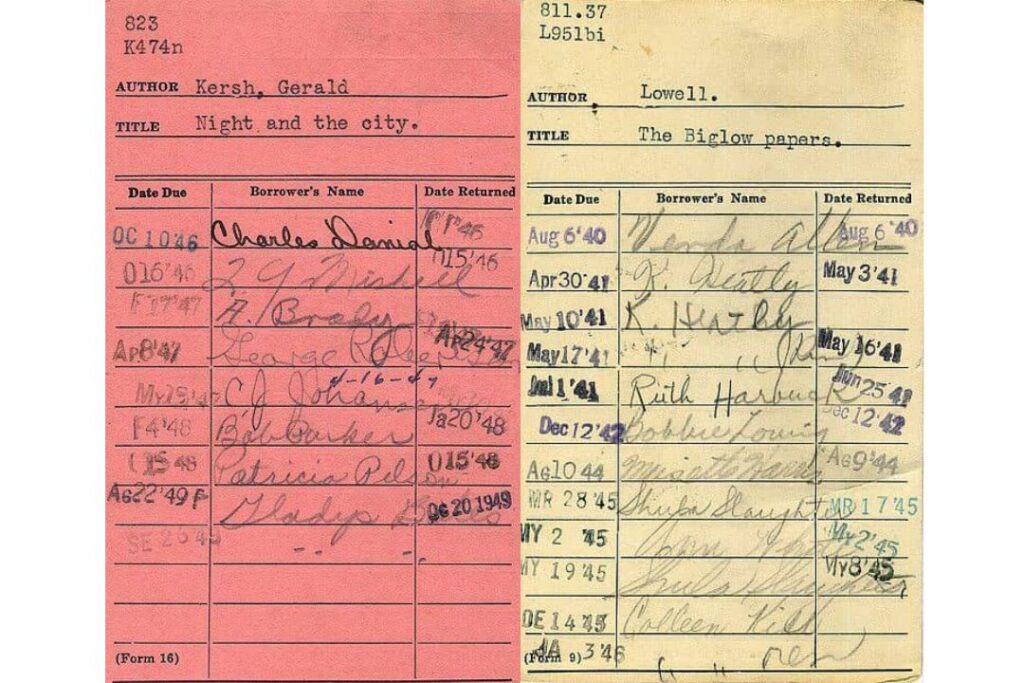
Every library book once had a card tucked into a pocket inside the cover. When you checked out the book, a librarian stamped the due date on the card, creating a neat history of readers before you. Sometimes you’d spot familiar names, or notice a favorite book borrowed dozens of times. The ink smudges and fading stamps gave each card a lived-in quality, linking generations of readers. Kids often remembered the nervous thrill of watching the librarian’s stamp come down, marking the countdown until the book had to be returned. In a way, those cards were shared timelines, silently connecting strangers who loved the same stories. Today, digital systems handle it all, but the old cards carried a charm that technology can’t quite replace.
19. Work Time Cards
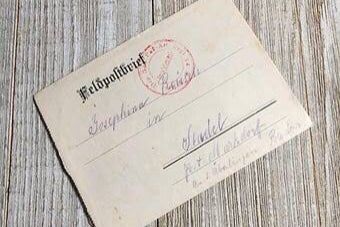
Punching in and out with a paper time card was once the daily rhythm of work. Employees slid their cards into heavy machines that clunked as they stamped the exact time of arrival and departure. Each week, a stack of cards told the story of shifts worked, overtime earned, and hours missed. Managers collected and tallied them by hand, sometimes catching mistakes or smudged ink along the way. For workers, the ritual of punching in symbolized the start of duty, while punching out meant freedom for the day. Time cards weren’t just practical, they were tangible proof of effort and accountability in the workplace, long before swipe badges or digital clocks replaced them.
Looking back, they remind us not only of how much life has changed, but also of the simple satisfaction that came from writing things down and keeping track the analog way.
This story 19 Things We Used to Track Everything, All Without a Screen was first published on Daily FETCH


